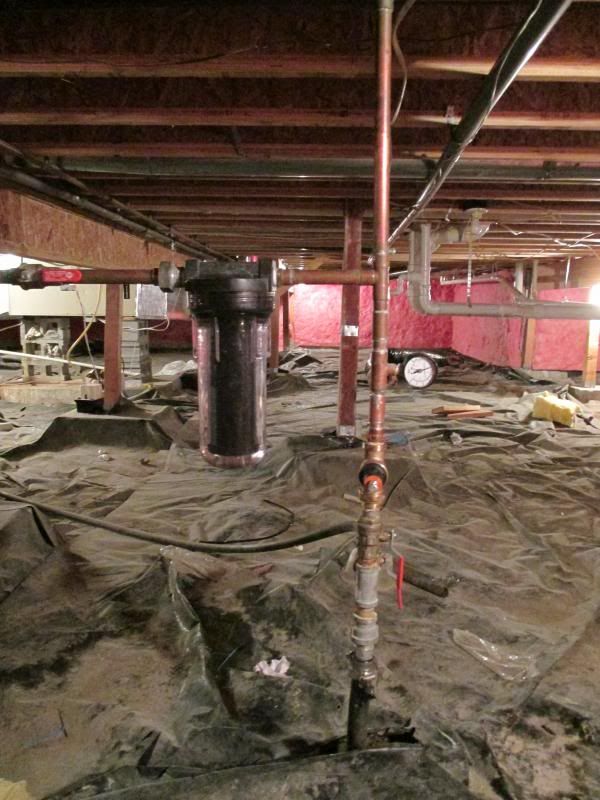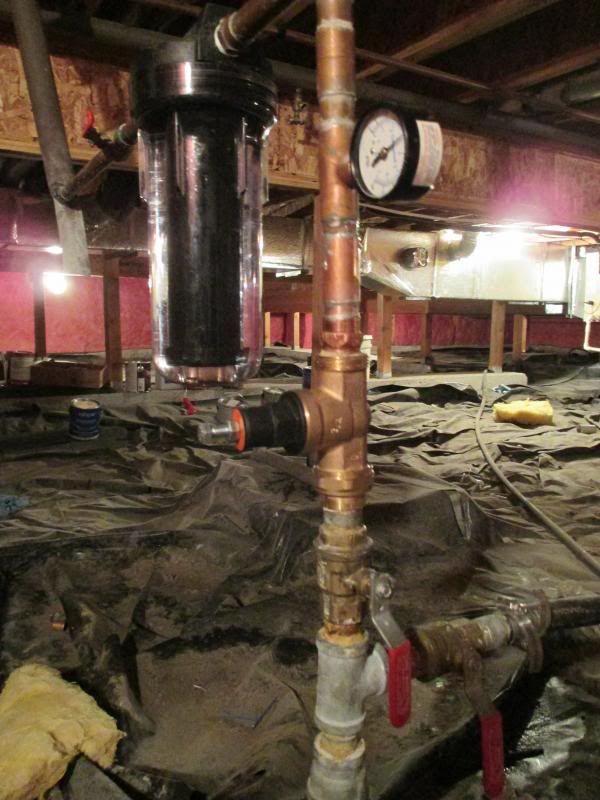So I just replaced a non-functional PR valve (incoming pressure is 120 psi). I set the pressure on the new valve at 55 psi. I have a closed system and I DO NOT have a thermal expansion tank installed, I will be doing that very soon.
So I checked the pressure downstream of the PR valve today and it read 80 psi. I get that thermal expansion can play havoc, so I figured that was the issue. But to check, I turned the valves to isolate the PR valve (turned valves downstream and upstream of the PR valve) and then pushed the button on my filter to relieve the system pressure to zero. I opened back up the upstream valve and the pressure jumped back to 80 psi?! HUH? The pressure gauge and PR valve were isolated from the main house...how can the pressure reducer not reduce it to the pre-set 55 psi? Thermal expansion shouldn't have been an issue under this scenario since the it was isolated from the rest of the plumbing, right?
I re-set the PR valve to 55 and will watch it. I am confused as to why it did not stay set at 55 with a brand new PR valve?
Any ideas on what's going on?
So I checked the pressure downstream of the PR valve today and it read 80 psi. I get that thermal expansion can play havoc, so I figured that was the issue. But to check, I turned the valves to isolate the PR valve (turned valves downstream and upstream of the PR valve) and then pushed the button on my filter to relieve the system pressure to zero. I opened back up the upstream valve and the pressure jumped back to 80 psi?! HUH? The pressure gauge and PR valve were isolated from the main house...how can the pressure reducer not reduce it to the pre-set 55 psi? Thermal expansion shouldn't have been an issue under this scenario since the it was isolated from the rest of the plumbing, right?
I re-set the PR valve to 55 and will watch it. I am confused as to why it did not stay set at 55 with a brand new PR valve?
Any ideas on what's going on?






























![MEISTERFAKTUR drain snake 2.0 [50 FT] - with drill attachment - Ideal plumbing snake for sink and drain unblocking - Solid drain auger for real DYIs! (50 FT - 1/4 inch)](https://m.media-amazon.com/images/I/41VwmTiOsgL._SL500_.jpg)



























